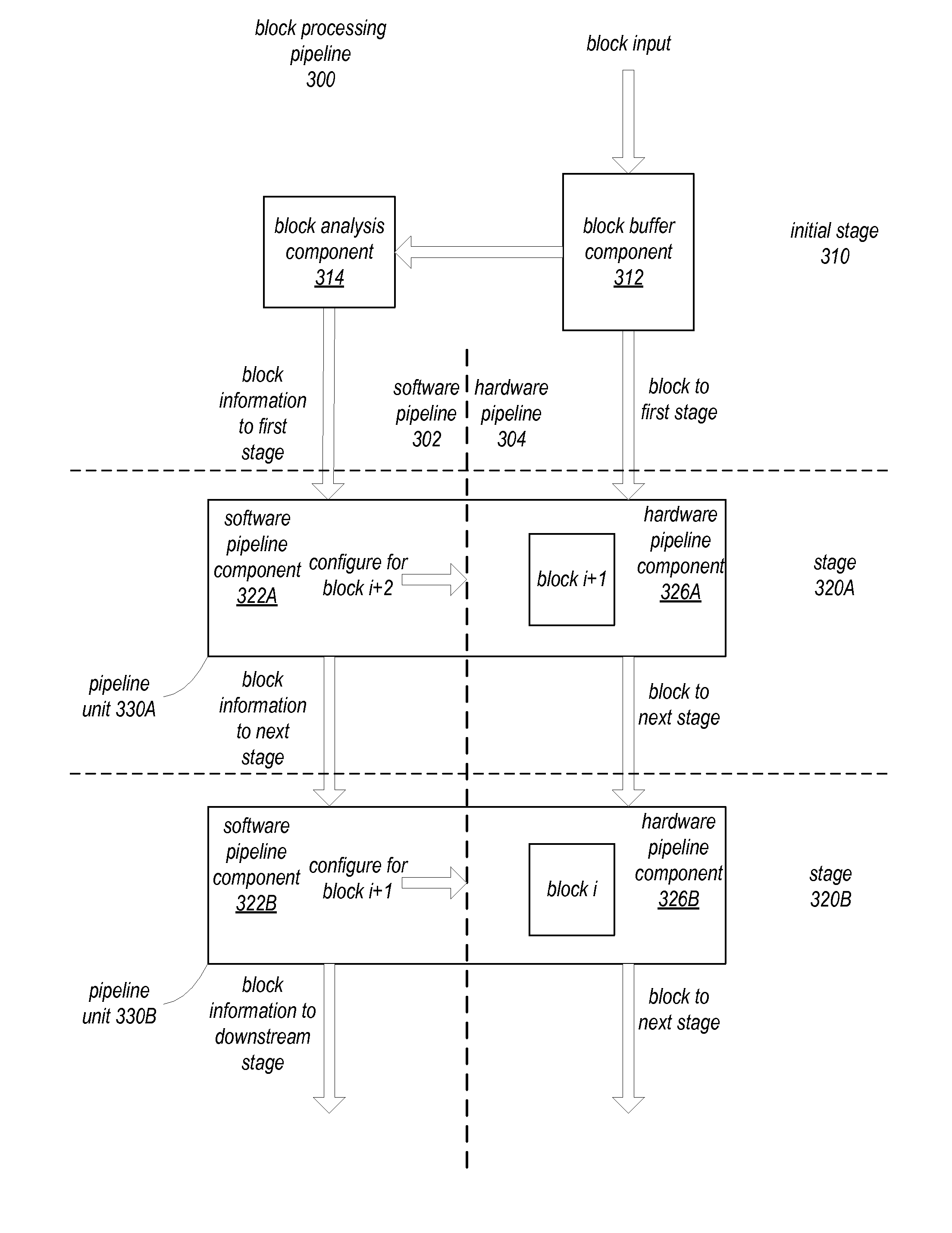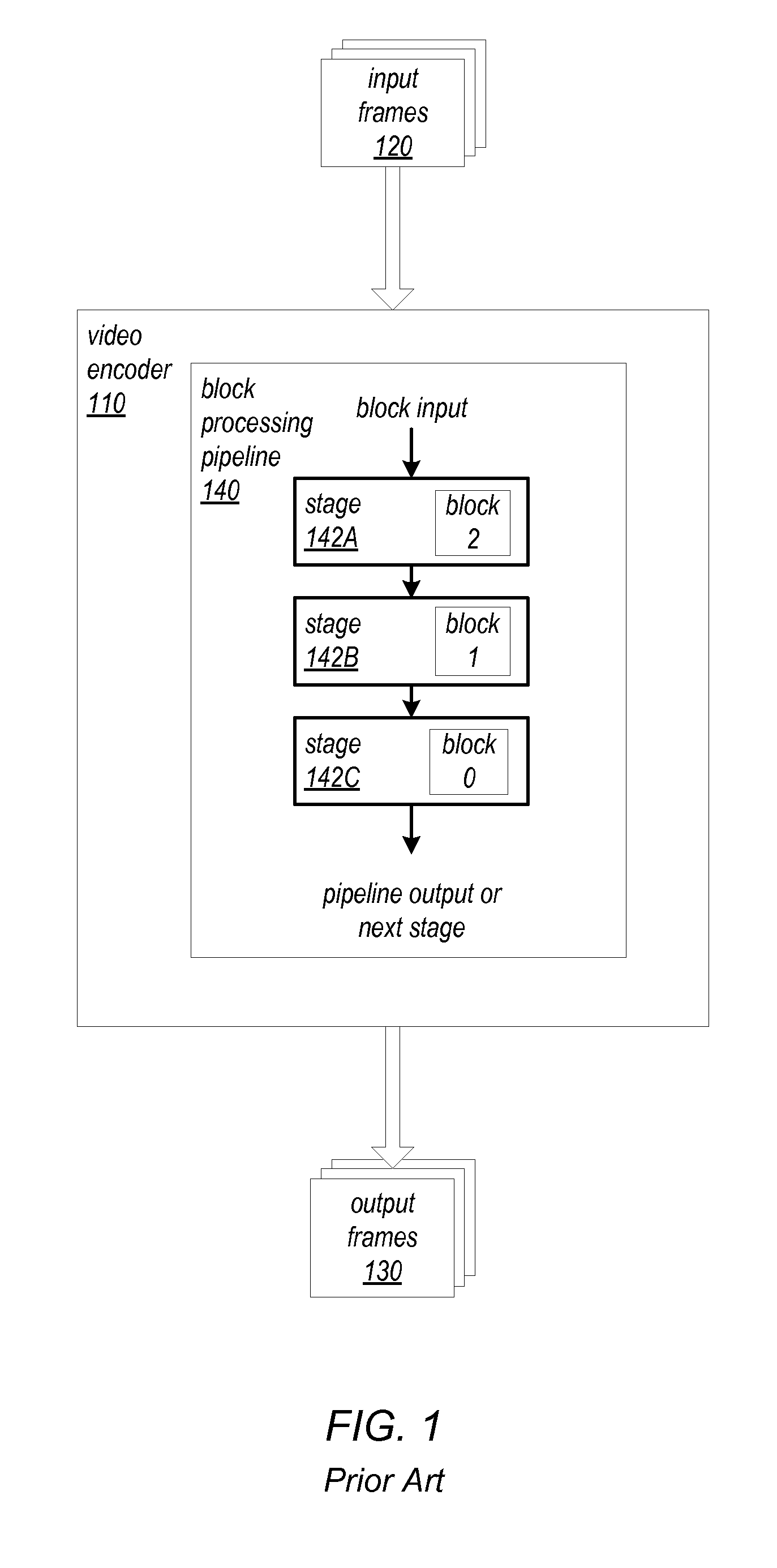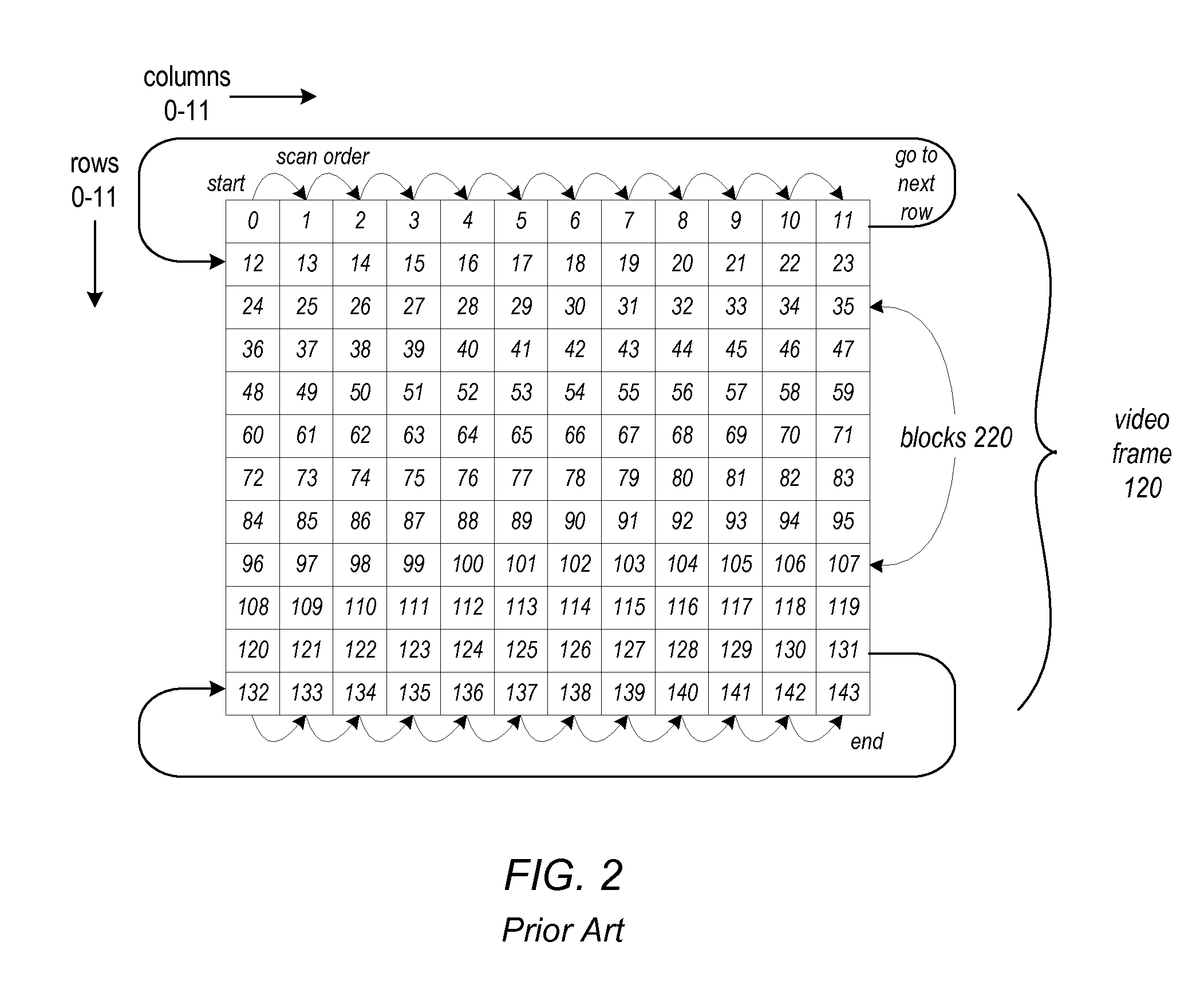Encoding blocks in video frames containing text using histograms of gradients
a technology of gradient gradient and video frame, applied in the field of video or image processing, can solve the problem of prohibitively high cost of encoding, and achieve the effect of improving the quality of encoding and increasing the performan
- Summary
- Abstract
- Description
- Claims
- Application Information
AI Technical Summary
Benefits of technology
Problems solved by technology
Method used
Image
Examples
example pipeline
Units
[0120]FIGS. 15A through 15C are block diagrams of example pipeline processing units that may be used at the stages of a block processing pipeline that implements one or more of the block processing methods and apparatus as described herein, according to at least some embodiments. For example, one or more of pipeline units 1500A and / or 1500B as shown in FIGS. 15A and 15B may be used at each stage of the example block processing pipeline shown in FIG. 16. Note that FIGS. 15A through 15C are not intended to be limiting; a pipeline processing unit may include more or fewer components and features than those shown in the Figures.
[0121]As shown in FIG. 15A, a pipeline unit 1500A may include at least a memory 1510 and a unit core 1520. Unit core 1520 may be a component (e.g., a circuit) that is configured to perform a particular operation on or for a block, or a portion of a block, at a particular stage of the block processing pipeline. Memory 1510 may, for example, be a double-buffer...
example block
Processing Pipeline
[0125]FIG. 16 is a high-level block diagram of general operations in an example block processing method 1600 for H.264 encoding that may be implemented in stages by a block processing pipeline that may implement one or more of the block processing methods and apparatus as described herein, according to at least some embodiments. A block processing pipeline that implements the block processing method 1600 may, for example, be implemented as a component of an H.264 video encoder apparatus that is configured to convert input video frames from an input format into H.264 / Advanced Video Coding (AVC) format as described in the H.264 / AVC standard. The H.264 / AVC standard is published by ITU-T in a document titled “ITU-T Recommendation H.264: Advanced video coding for generic audiovisual services”, which may be referred to as the H.264 Recommendation. An example input video format is 1080 p (1920×1080 pixels, 2.1 megapixels) encoded in YCbCr color space. However, other inpu...
PUM
 Login to View More
Login to View More Abstract
Description
Claims
Application Information
 Login to View More
Login to View More - R&D
- Intellectual Property
- Life Sciences
- Materials
- Tech Scout
- Unparalleled Data Quality
- Higher Quality Content
- 60% Fewer Hallucinations
Browse by: Latest US Patents, China's latest patents, Technical Efficacy Thesaurus, Application Domain, Technology Topic, Popular Technical Reports.
© 2025 PatSnap. All rights reserved.Legal|Privacy policy|Modern Slavery Act Transparency Statement|Sitemap|About US| Contact US: help@patsnap.com



